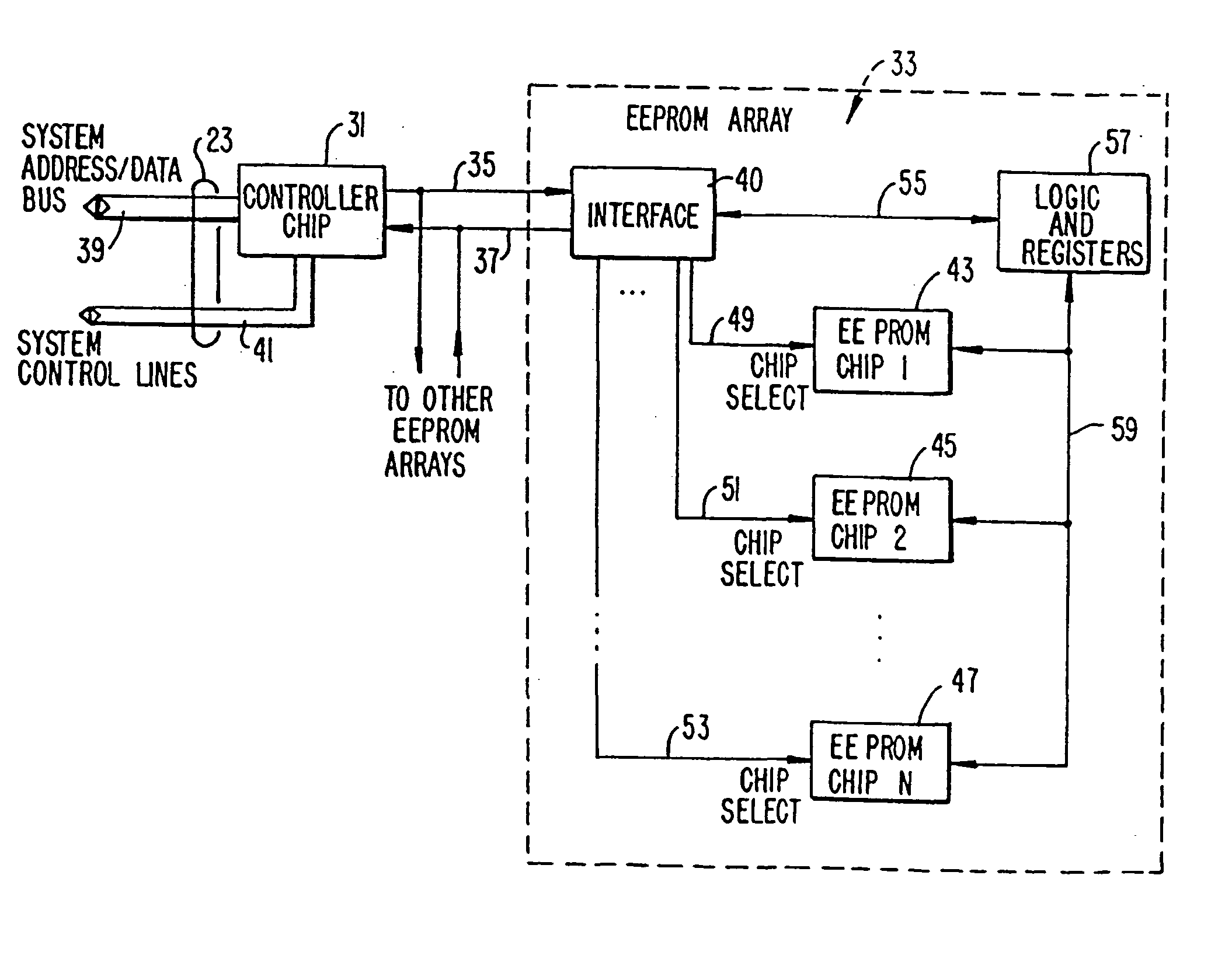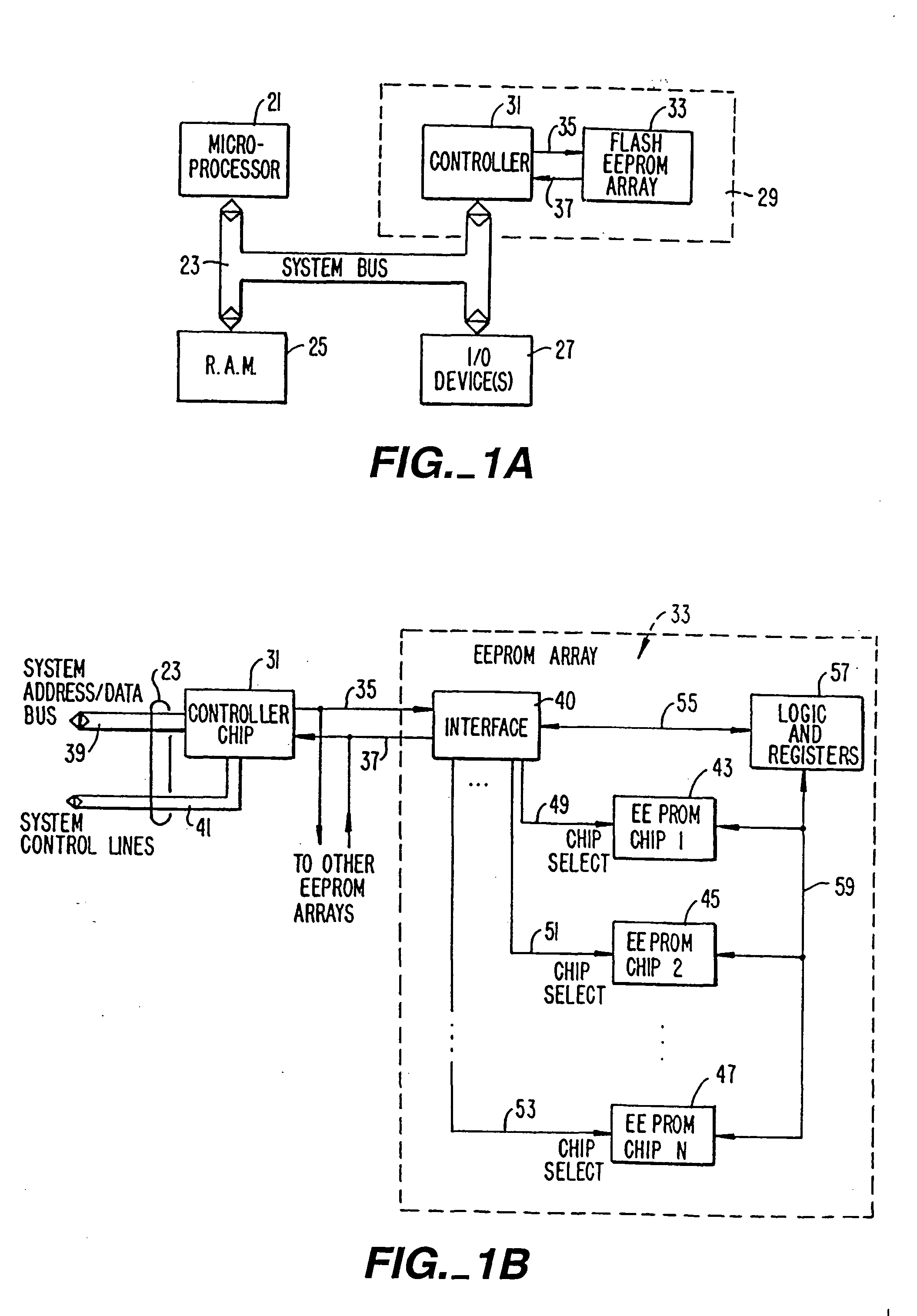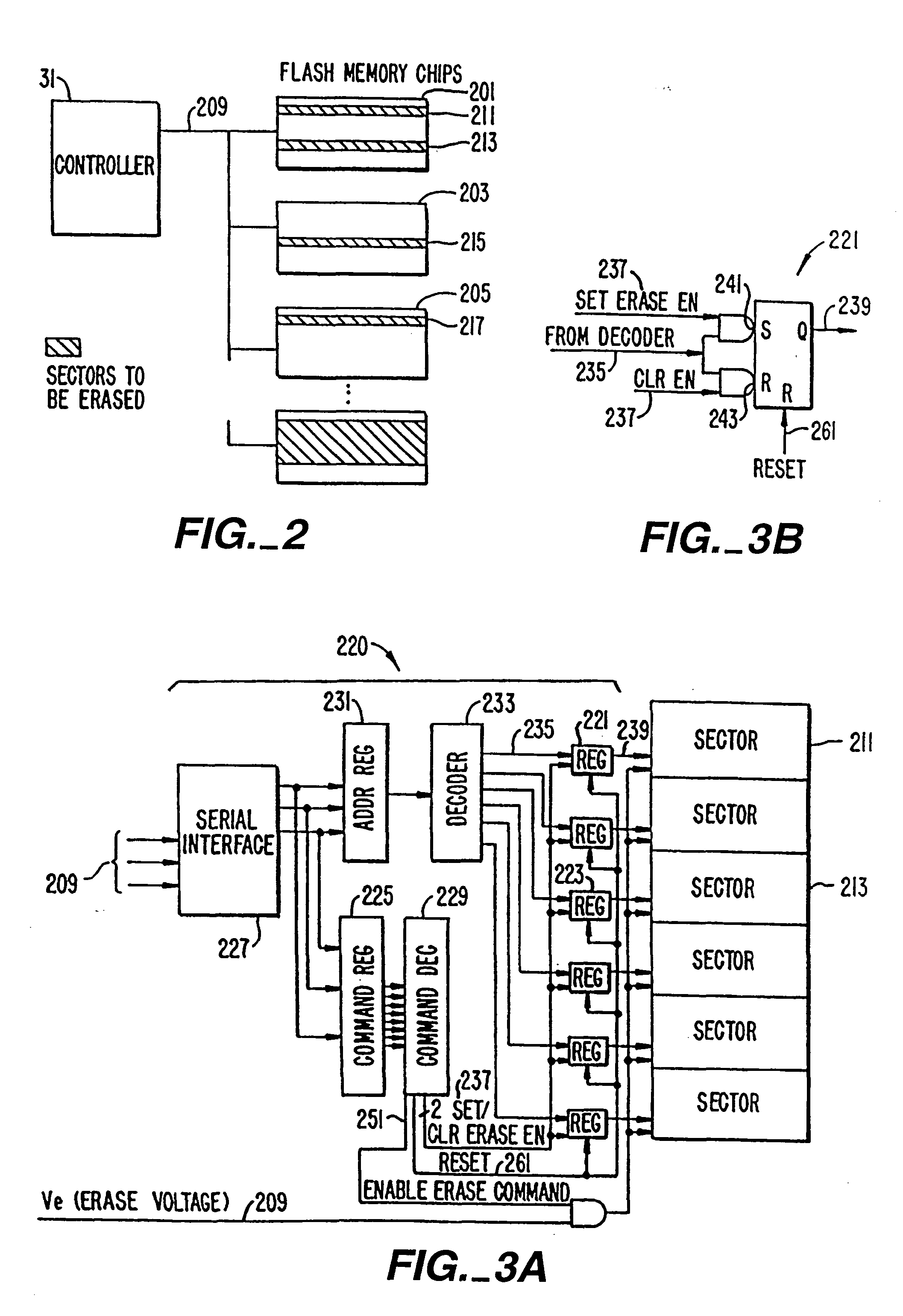Flash EEprom system
a flash eeprom and chip technology, applied in the field of integrated circuit flash eeprom chips, can solve the problems of reliability problems, disadvantages of disk drives, and requirement for high-precision moving mechanical parts
- Summary
- Abstract
- Description
- Claims
- Application Information
AI Technical Summary
Benefits of technology
Problems solved by technology
Method used
Image
Examples
Embodiment Construction
EEprom System
[0029] A computer system in which the various aspects of the present invention are incorporated is illustrated generally in FIG. 1A. A typical computer system architecture includes a microprocessor 21 connected to a system bus 23, along with random access, main system memory 25, and at least one or more input-output devices 27, such as a keyboard, monitor, modem, and the like. Another main computer system component that is connected to a typical computer system bus 23 is a large amount of long-term, non-volatile memory 29. Typically, such a memory is a disk drive with a capacity of tens of megabytes of data storage. This data is retrieved into the system volatile memory 25 for use in current processing, and can be easily supplemented, changed or altered.
[0030] One aspect of the present invention is the substitution of a specific type of semiconductor memory system for the disk drive but without having to sacrifice non-volatility, ease of erasing and rewriting data in...
PUM
 Login to View More
Login to View More Abstract
Description
Claims
Application Information
 Login to View More
Login to View More - R&D
- Intellectual Property
- Life Sciences
- Materials
- Tech Scout
- Unparalleled Data Quality
- Higher Quality Content
- 60% Fewer Hallucinations
Browse by: Latest US Patents, China's latest patents, Technical Efficacy Thesaurus, Application Domain, Technology Topic, Popular Technical Reports.
© 2025 PatSnap. All rights reserved.Legal|Privacy policy|Modern Slavery Act Transparency Statement|Sitemap|About US| Contact US: help@patsnap.com



